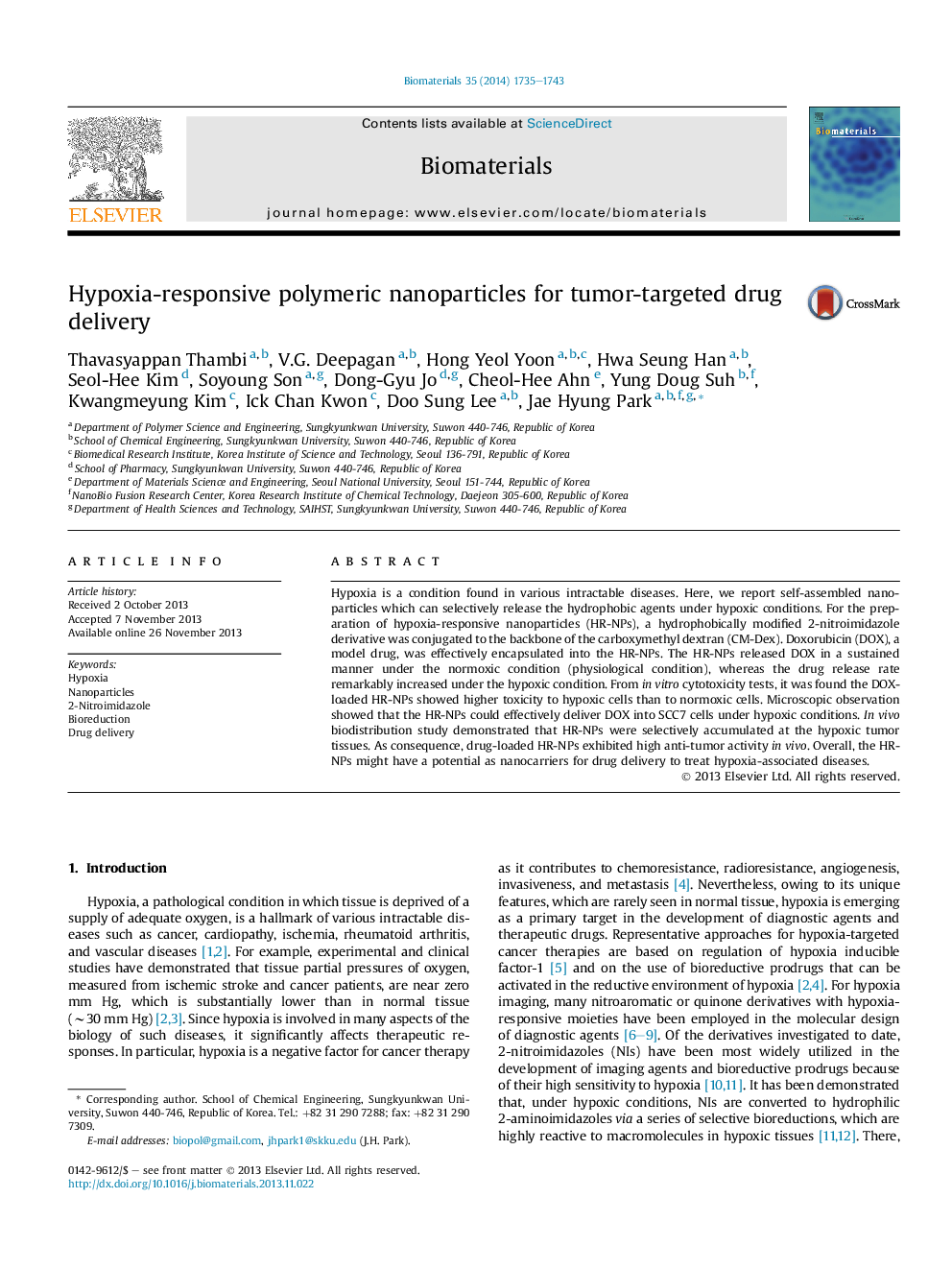| Article ID | Journal | Published Year | Pages | File Type |
|---|---|---|---|---|
| 10227482 | Biomaterials | 2014 | 9 Pages |
Abstract
Hypoxia is a condition found in various intractable diseases. Here, we report self-assembled nanoparticles which can selectively release the hydrophobic agents under hypoxic conditions. For the preparation of hypoxia-responsive nanoparticles (HR-NPs), a hydrophobically modified 2-nitroimidazole derivative was conjugated to the backbone of the carboxymethyl dextran (CM-Dex). Doxorubicin (DOX), a model drug, was effectively encapsulated into the HR-NPs. The HR-NPs released DOX in a sustained manner under the normoxic condition (physiological condition), whereas the drug release rate remarkably increased under the hypoxic condition. From in vitro cytotoxicity tests, it was found the DOX-loaded HR-NPs showed higher toxicity to hypoxic cells than to normoxic cells. Microscopic observation showed that the HR-NPs could effectively deliver DOX into SCC7 cells under hypoxic conditions. In vivo biodistribution study demonstrated that HR-NPs were selectively accumulated at the hypoxic tumor tissues. As consequence, drug-loaded HR-NPs exhibited high anti-tumor activity in vivo. Overall, the HR-NPs might have a potential as nanocarriers for drug delivery to treat hypoxia-associated diseases.
Related Topics
Physical Sciences and Engineering
Chemical Engineering
Bioengineering
Authors
Thavasyappan Thambi, V.G. Deepagan, Hong Yeol Yoon, Hwa Seung Han, Seol-Hee Kim, Soyoung Son, Dong-Gyu Jo, Cheol-Hee Ahn, Yung Doug Suh, Kwangmeyung Kim, Ick Chan Kwon, Doo Sung Lee, Jae Hyung Park,
